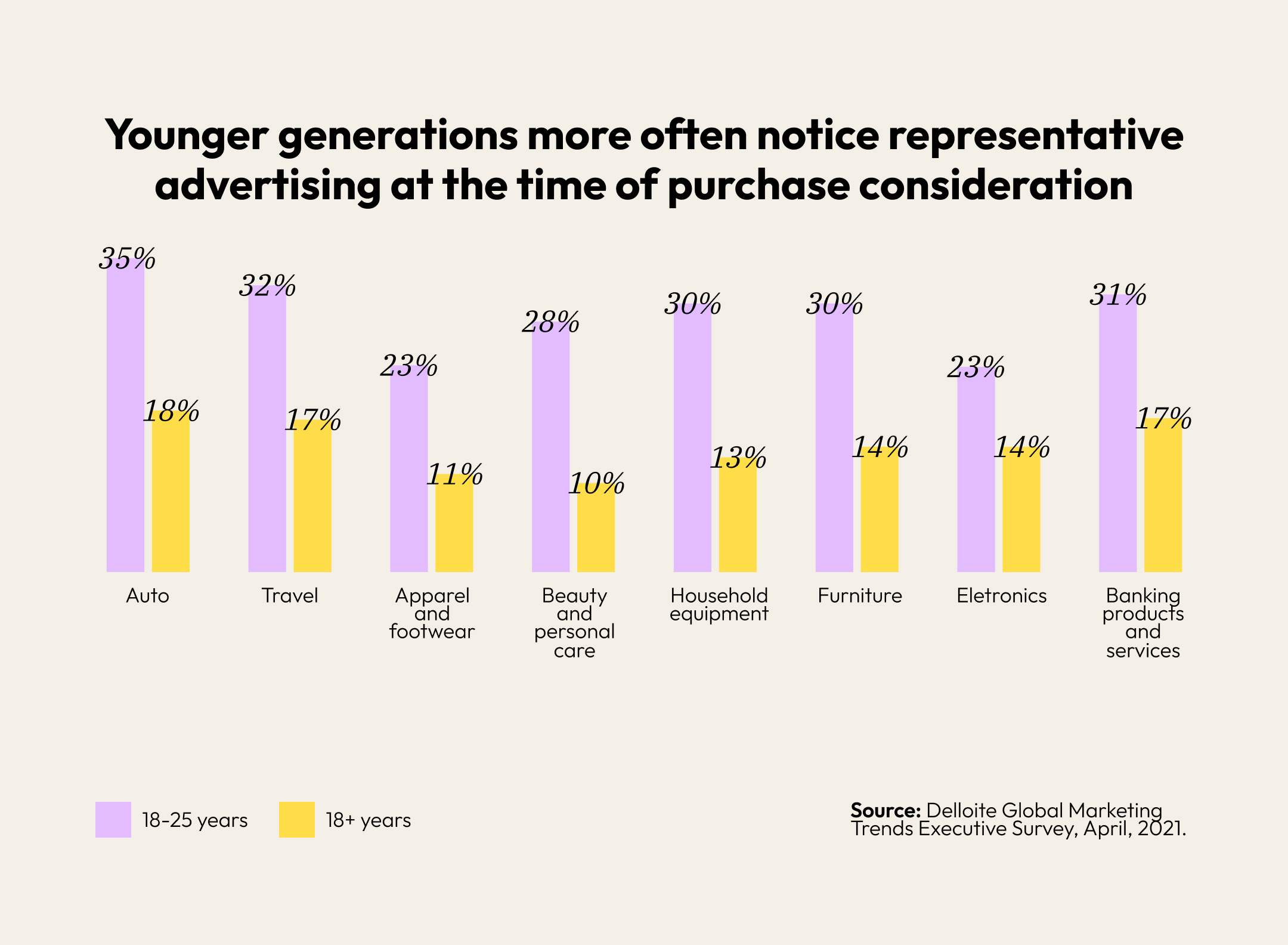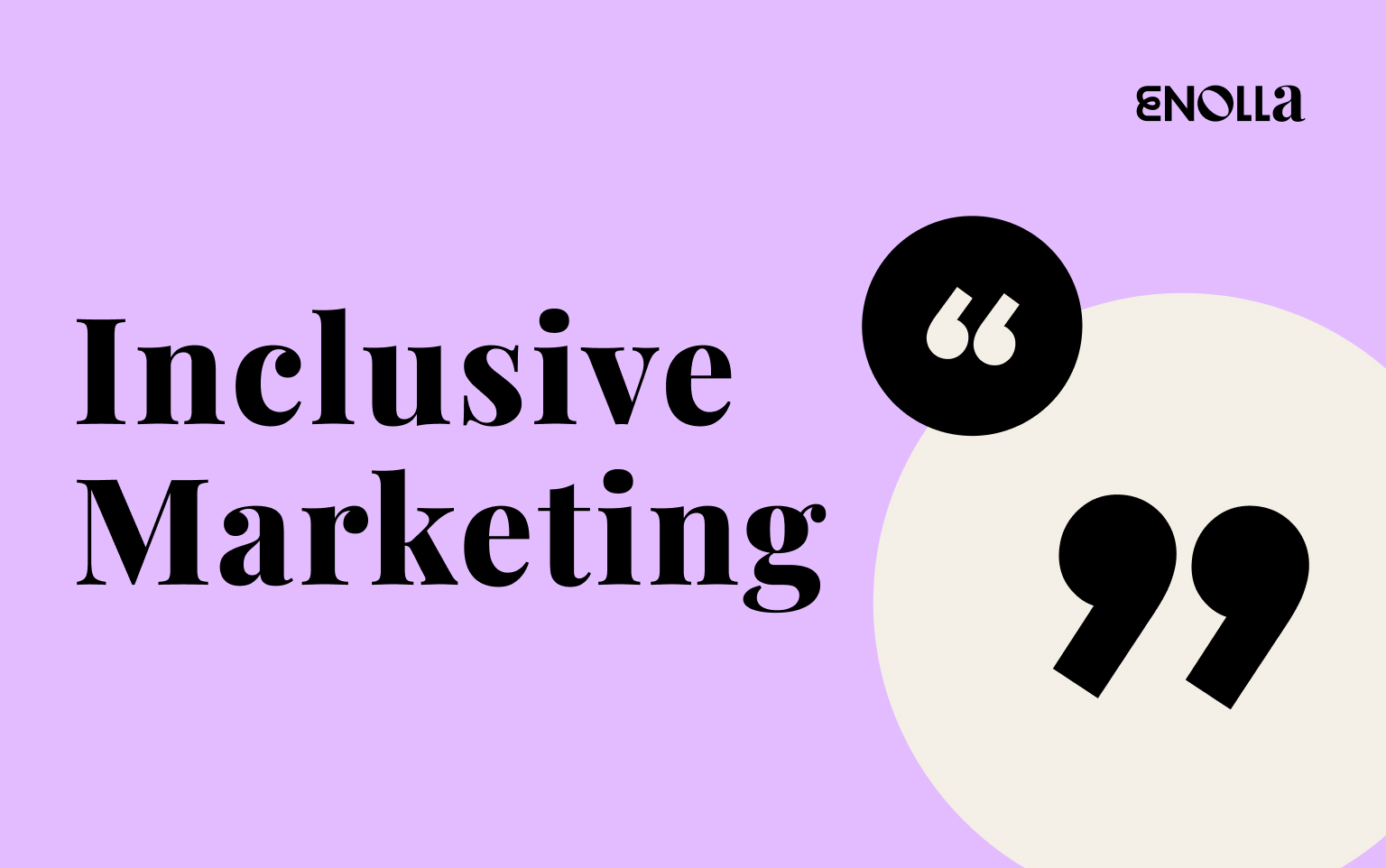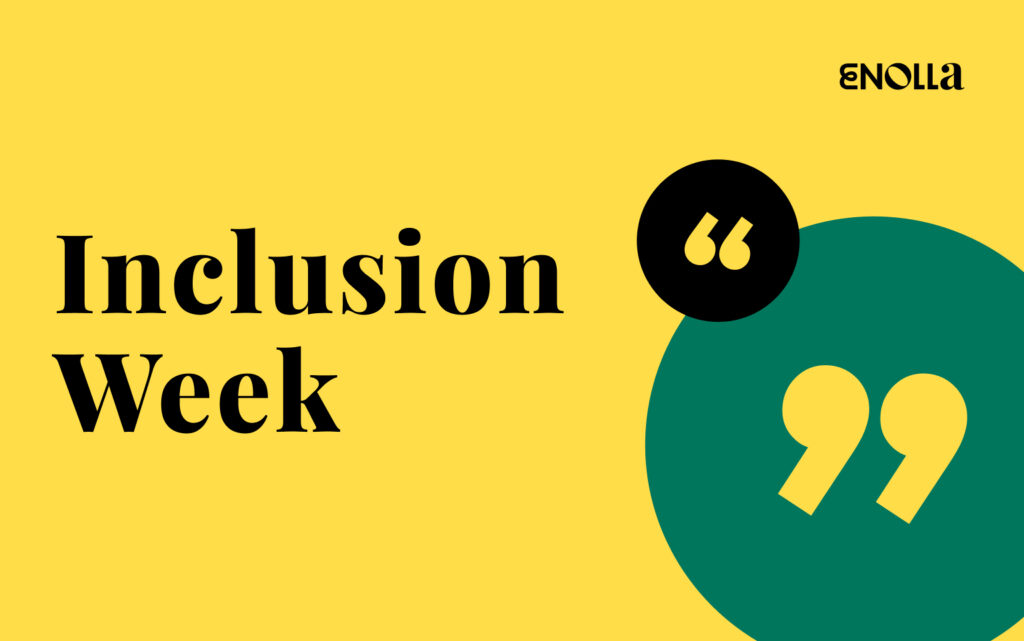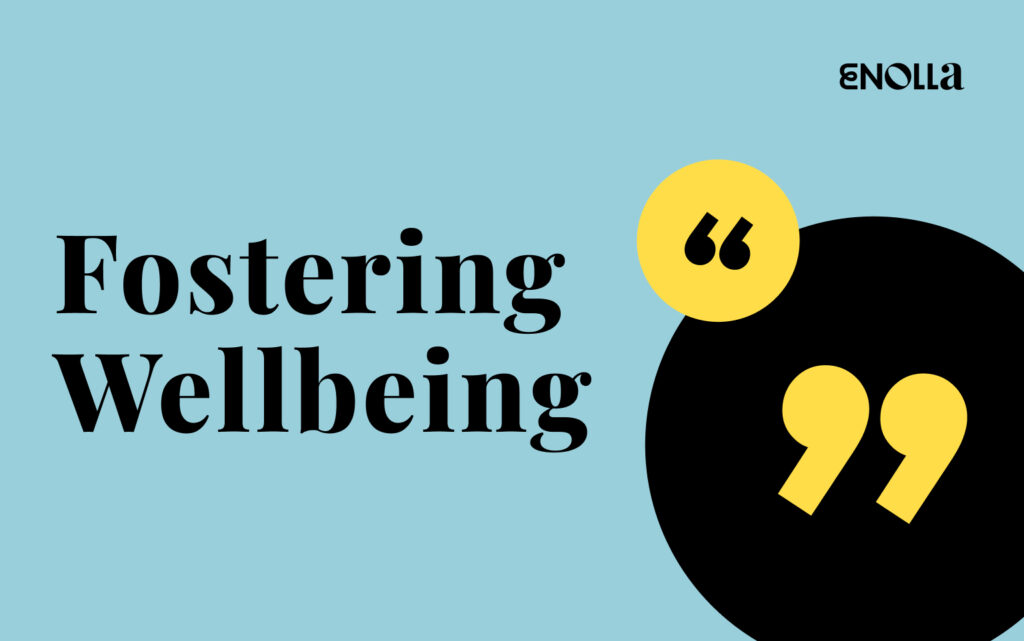As the consumer population diversifies — by race and ethnicity, sexual orientation, or differences in ability, for example — it’s imperative for brands to authentically reflect a range of backgrounds and experiences within their messaging and ensure accessibility for all if they expect to effectively connect with future customers.
To effectively engage a diverse audience, brands must go beyond mere representation and actively integrate inclusivity and accessibility into their marketing strategies. This involves not only showcasing diverse voices and perspectives in your content but also ensuring that all potential customers can interact with your brand effortlessly, regardless of their abilities or backgrounds.
In this article, we delve into the strategies and best practices that can help your marketing efforts reach and engage a wider audience, being inclusive and accessible, ensuring that your brand stands out in a marketplace where every voice matters.
But before we begin, it’s important to understand that inclusivity and accessibility, while closely related, serve distinct but complementary roles in creating equitable experiences. Together, they ensure that marketing campaigns are both welcoming and functional for everyone. Understanding these concepts is crucial for developing effective and impactful marketing strategies.
Let’s take a look ahead.
Inclusiveness and Accessibility in Marketing
Inclusive and accessible marketing campaigns should be grounded in key principles that ensure they resonate with and reach a diverse audience. First, representative imagery and language are crucial, showcasing a variety of identities and experiences to reflect the true diversity of the audience. Next, clear and simple communication must be prioritised, avoiding jargon and using straightforward language to ensure that messages are easily understood by everyone, including those with cognitive or learning disabilities. Accessibility features, such as alt text for images, captions for videos, and adaptable content formats, should be incorporated to cater to individuals with visual, auditory, or motor impairments. Additionally, cultural sensitivity is essential, requiring marketers to be mindful of and respect cultural differences and avoid stereotypes. Lastly, continuous feedback and improvement should be embraced, seeking input from diverse groups to refine and enhance the campaign’s inclusivity and effectiveness over time.
While these foundational principles are essential, there are many additional considerations to ensure that marketing efforts are both inclusive and accessible.
Let’s explore a few strategies to help you implement these principles effectively.
Inclusive Digital Marketing
In the context of digital marketing, inclusivity refers to the practice of ensuring that marketing content, platforms, and strategies are designed to engage and resonate with a diverse audience, regardless of their background, identity, or abilities. This involves creating content that reflects a wide range of experiences and perspectives, and using language, imagery, and formats that are welcoming and representative of various groups.
Beyond representation, according to Lola Bakare, Inclusive Marketing Strategist, in her article ‘The Truth on Authentic Inclusive Marketing and How to Make It Happen’, authentic and inclusive marketing also maximises value at the intersection of measurable societal impact and every marketer’s most important jobs to be done: elevating brand reputation, and achieving commercial goals. In Deloitte’s survey of 11,500 global consumers, they found the youngest respondents (18-25 years old) took more significant notice of inclusive advertising when making purchase decisions. The results also show 57% of consumers are more loyal to brands that commit to addressing social inequities in their actions.

Source: Deloitte Global Marketing Trends Executive Survey, April, 2021.
As evidenced by statistics, it’s clear that having a dedicated marketing team or experts in Diversity, Equity, and Inclusion is crucial in all business aspects, being responsible for reviewing creative content and messaging from multiple perspectives and lived experiences to ensure that the brand’s communications are genuinely inclusive and effective.
Strategies for Inclusivity in Digital Marketing
While it might seem evident that inclusivity is crucial, many companies still struggle with its implementation. Often, the challenge lies either in not recognising its importance, or in understanding how to effectively integrate inclusivity into their practices. That’s why we’re here to guide you through it.
The first step you need to take to achieve this, is to move beyond superficial gestures and adopt comprehensive strategies that truly reflect and respect the diverse world we live in. This involves understanding and addressing the unique needs and experiences of different communities, fostering genuine connections, and consistently integrating inclusivity into all aspects of your marketing practices.
Here are some of the key strategies to guide your inclusive marketing efforts:
- Diverse representation:
Ensure that your marketing materials feature diverse groups of people, including various races, genders, ages, abilities, and body types.
- Inclusive language:
Use language that is inclusive and respectful of all individuals. Avoid jargon and, by any chance, include terms that might be exclusionary or offensive.
- Don’t ‘check-the-box diversity’:
This is called Tokenism and occurs when someone from a marginalised group is included in a campaign merely to meet a quota, deflect criticism, or create the illusion of fair treatment.
- Support communities consistently:
Ensuring consistent and sustainable support for communities throughout the year, rather than solely focusing on “awareness days” or special diversity announcements is essential. Inclusive brands excel in this aspect by consistently embodying their values in everyday communications and actions.
- Ensure teams and suppliers reflect your market:
When your teams reflect the market’s diversity, they are better equipped to develop authentic and culturally relevant marketing strategies and messages. This authenticity fosters a stronger connection between the brand and its audience.
- Bring diverse voices back to the organisation:
Diverse voices represent a multitude of backgrounds, experiences, and identities, which can offer unique insights into the needs and preferences of diverse consumer segments, and also contribute to a richer pool of ideas, leading to more creative problem-solving and innovation, ultimately driving the organisation’s growth.
- Make your commitments measurable:
By setting specific, measurable goals related to diversity, equity, and inclusion provides a tangible way to track progress, hold the organisation accountable, and ensure that meaningful change occurs. They also demonstrate a genuine commitment, instilling trust and confidence among employees, customers, and stakeholders.
To illustrate a few of these principles in action, let’s take a look in some case examples ahead.
Case examples
As we saw up until now, when exploring inclusive marketing campaigns, it’s essential to consider how brands can make a meaningful impact through their initiatives, and case examples are a great way to serve as powerful illustrations of this principle in action. Inclusive brands should think about how to create real opportunities for diverse communities and address genuine challenges faced by these groups. By doing so, they not only enhance their brand’s reputation but also contribute to a more equitable and accessible marketplace.
- Mastercard’s “True Name”: A feature that allows transgender and nonbinary people to proudly display their chosen name on their credit card.
- P&G’s “The Talk”: Addressing racial bias and the conversations Black parents have with their children about navigating discrimination, an honest portrayal of systemic issues and its commitment to sparking important conversations about race.
- Ben & Jerry’s “I Dough, I Dough” campaign: Featuring LGBTQ+ pride-themed ice cream flavours promoting the company’s support for LGBTQ+ rights.
Now that we’ve explored the fundamentals and some examples of inclusive marketing campaigns, let’s delve deeper into marketing accessibility, looking from strategies for implementing accessible marketing practices to reviewing some other real-world case examples.
Digital Marketing Accessibility
As mentioned before, online accessibility refers to the practice of designing digital content—such as websites, apps, and multimedia—so that it can be easily accessed and used by individuals of all abilities and disabilities. This includes ensuring that content is compatible with assistive technologies like screen readers, providing alternative text for images, and designing intuitive navigation.
According to a study from the World Health Organization, an estimated 1.3 billion people experience significant disability, representing 16% of the world’s population, and approximately 16 million people in the UK live with a disability, which makes up approximately 24% of the population. Despite this significant number, disabled individuals frequently face excessive exclusion in marketing, be it in terms of representation or the incorporation of digital accessibility features. Additionally, a research from Lloyds Bank, disabled people are over 50% more likely to face barriers to accessing digital and online services than non-disabled people.
These statistics emphasise that integrating inclusivity and accessibility into marketing efforts not only broadens reach but also drives business success. By prioritising inclusivity, brands not only foster a more equitable and engaging digital experience but also build stronger connections with a broader, more diverse audience.
Strategies for Accessibility in Digital Marketing
The good news is that businesses are recognising the myriad benefits of digital accessibility, with key points highlighting its significance. Firstly, compliance with regional accessibility standards, such as those outlined by W3C and WCAG, not only helps avoid legal issues and potential lawsuits but also establishes a commitment to inclusivity.
Additionally, digital accessibility enhances branding by catering to the needs of differently-abled individuals, fostering a positive image among customers. Furthermore, it plays a pivotal role in boosting search engine rankings, as incorporating features like alt text for images and videos aligns with Google’s reliance on text to understand the content.
This, in turn, improves visibility and ranking in search results. The impact on return on investment is substantial, as well-planned digital accessibility efforts can yield significant returns, outweighing associated costs. Lastly, digital accessibility enhances usability, ensuring that the website accommodates users with diverse limitations, ultimately contributing to the overall success of the business online.
With that being said, here are some best practices you can incorporate to include accessibility in digital marketing.
- Create content accessibility in Alt text for images:
Ensure your marketing materials are inclusive by including descriptive alternative text for images. This small but impactful addition assists users who rely on screen readers, giving them a meaningful description of the visual content.
Alt-text enhances inclusivity by providing a descriptive experience for users with visual impairments and contributes significantly to improving Google search engine rankings. As Google relies on text to interpret images and media content, integrating alt-text becomes a crucial element in elevating the visibility and accessibility of your website in search engine results.
According to a study conducted by WebAIM in “The 2024 report on the accessibility”, 21.6% of all home page images analysed (12 per page on average) had missing alternative text and 43% of the images missing alternative text were linked images—resulting in links that were not descriptive. These data show that one may expect one third of the images on popular home pages to have missing, questionable, or repetitive alternative text.
- Use clear and readable fonts:
Use clear, legible fonts with an appropriate size and contrast. This not only enhances readability for users with visual impairments but also improves the overall user experience for all your audience.
Here are some examples: Helvetica Neue, Arial, OpenDyslexic and Verdana.
- Use captioned content and transcripts:
Make your multimedia content accessible by providing captions for videos and transcripts for audio. This accommodates users with hearing impairments, ensuring they can engage with your content seamlessly.
- Apply universal design principles:
Incorporate universal design principles into your marketing materials. This ensures that your content is accessible to a wide range of users without the need for adaptation, fostering an inclusive digital environment.
- Pay attention to colour contrast:
Also according to the WebAIM study, during the analysis, low contrast text was found on 81% of home pages and that was the most commonly-detected accessibility issue.
Don’t forget to ensure sufficient contrast between text and background to make the content readable for users with visual impairments, with a contrast ratio of at least 4.5:1.
You can use online tools to check colour contrast ratio such as this one.
- Apply multilingual accessibility:
Provide translations for key content to reach a diverse, multilingual audience. This expands your reach and ensures that individuals from different linguistic backgrounds understand your message.
- Always have cultural sensitivity:
Be mindful of cultural nuances and sensitivities in your marketing messaging. Tailor your content to resonate with diverse cultural backgrounds, avoiding any accidental misunderstandings.
- Apply settings to create an accessible social media:
In addition to captioned content and alt text, such as we saw previously, here are some specific suggestions for social media accessibility:
- Language: Employ straightforward language, steer clear of acronyms and watch out for adapting words, if possible. For example, using “x” to make a word gender-neutral, as in “Latinx”, is a practice some people adopt to avoid gender-specific language. However, it has been debated regarding its accessibility, because it can be difficult for screen readers used by people with visual impairments to interpret, and it can be confusing for those unfamiliar with its use. For broader audiences, using inclusive but more universally understood terms can be more effective and widely accepted, such as “Latine” instead of “Latinx”.
- Accessible hashtags: Create and promote accessible hashtags that are easy to read and understand. Use “CamelCase” for hashtags, capitalising the first letter of each word. This will facilitate screen readers reading the words individually rather than as incoherent words. For example, #AccessibleContent, #BeInclusive.
- Emojis and emoticons: Screen readers provide detailed descriptions for emojis, which is generally beneficial. However, it’s advisable to use them moderately and ensure adequate spacing between words and emojis. Emoticons, represented by text-like “( ͡° ͜ʖ ͡°)”, may pose challenges for comprehension, especially when read aloud by a screen reader. The individual characters are vocalised without conveying the intended meaning, making the use of emoticons discouraged for accessibility reasons.
Incorporating accessibility into your digital marketing campaign is not only a moral imperative but also a strategic business decision. By adopting these practices, you broaden your audience and create a positive brand image by demonstrating your commitment to inclusivity. In the rapidly changing digital landscape, accessibility is not just an option – it’s a fundamental aspect of successful and responsible digital marketing.
Case examples
- Microsoft’s “We All Win” Super Bowl Ad: This ad highlighted Microsoft’s adaptive controller designed for gamers with disabilities, showcasing inclusivity in gaming.
- Google’s “Lookout” App Launch: Google’s campaign for its Lookout app, designed for visually impaired users, included tutorials and guides with accessible formats.
- BBC Adjusted Website: The BBC provides options to change text size, contrast, and colour schemes on its website to enhance accessibility for all users, including those with visual impairments.
Benefits of Inclusive and Accessible Marketing
As we previously saw, incorporating inclusivity and accessibility into digital marketing strategies not only aligns with ethical business practices but also offers numerous advantages. These benefits extend to various aspects of business operations, customer satisfaction, and overall market reach.
Impact on Business
1. Market Expansion: Inclusive marketing strategies open up new segments of the market that might have previously been inaccessible. By catering to diverse needs and preferences, businesses can tap into a broader customer base.
2. Enhanced Brand Reputation: Companies that prioritise inclusivity and accessibility are often viewed more favourably by the public. This positive perception can enhance the overall reputation of the brand, making it more attractive to a wider audience. And by demonstrating a commitment to social responsibility, brands can foster trust and loyalty among consumers who value these principles.
An example of how inclusivity can enhance brand reputation is seen in research focused on e-commerce accessibility for shoppers with disabilities. Studies indicate that many online shoppers with disabilities face significant barriers when accessing websites, leading to a frustrating user experience.
“Having a significant disability, I just end up going back to the same places that have accessibility built in. So if they’ve welcomed me and opened the doors, I come back as a repeat customer. And that’s what we found with people with disabilities. The most brand-loyal customers when they’re taken care of, they come back again and again and again” said Josh Basile, a Community Relations Manager at a tech accessibility company who has quadriplegia.
Customer Experience
1. Personalisation and Relevance: Inclusive marketing ensures that campaigns resonate with a diverse audience by addressing different cultural, linguistic, and accessibility needs. This level of personalisation makes customers feel seen and valued. Tailoring content to meet the specific needs of various groups enhances the relevance of marketing messages, leading to higher engagement and conversion rates.
2. Accessibility Leads to Usability: Making digital content accessible improves the overall user experience for all customers, not just those with disabilities. Accessible design principles, such as clear navigation and readable text, benefit everyone by making websites and digital platforms easier to use. Enhanced usability can lead to lower bounce rates, higher customer satisfaction, and increased time spent on websites.
In conclusion, as we saw in this article, Inclusive and Accessible Marketing can authentically create change and deliver business goals, going beyond simply targeting diverse audiences: it’s about fostering an environment where everyone feels represented, valued, and included. By telling authentic stories, representing diverse communities, and avoiding stereotypes, we create meaningful connections with our audience. This fosters hashtag#brandloyalty, increases customer engagement, and drives positive business outcomes.
But it requires a collective effort from every member of the organisation: it’s not solely the responsibility of the marketing team but a commitment that should permeate across departments, leadership, and company culture.
Ready to create a more inclusive and supportive environment for your team? Contact us today to take the next step towards fostering a workplace where every employee can thrive.
Additional Resources
Guides and Checklists:
- Web Content Accessibility Guidelines (WCAG)
- Inclusive Design Principles
- Designing for Web Accessibility
- How To Design For Accessibility
Further Reading:
- “Inclusive Design for a Digital World” by Regine M. Gilbert
- “A Web for Everyone: Designing Accessible User Experiences” by Sarah Horton and Whitney Quesenbery
Sources
Baymard Institute | 94% of the Largest E-Commerce Sites Are Not Accessibility Compliant
WebAIM | The 2024 report on the accessibility
Lloyds Bank | UK Consumer Digital Index
WHO | Disability Data
Deloitte | Authentically inclusive marketing
WE ARE ENOLLA CONSULTING, A HUMAN INCLUSION CONSULTANCY.
We partner with our clients to create efficient, compassionate, and engaged working environments through fostering the power of Human Inclusion. Ready to transform your organisational culture with us?




